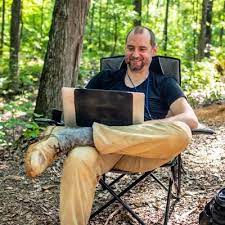Ecohydrology is one branch of hydrology, which is the science that deals with the occurrence, distribution, movement, and properties of water on earth. The ‘eco’ in ecohydrology aims to delineate the stores and movement of water most pertinent to ecological processes.
What are your undergraduate and graduate degrees in?
My undergraduate degree (BE) was in civil engineering from the American University of Beirut (in 1988) with emphasis on structural engineering. My Masters of Science (MS) degree was in agricultural engineering from Oregon State University (in 1990), whereas my PhD degree was in Hydrological Sciences from University of California in Davis (in 1993).
How did you arrive at working in/thinking about ecohydrology?
Mainly during my MS thesis work, which focused on crop water requirements, evapotranspiration, irrigation systems design, soil water movement, and root-water uptake. This work brought into focus connections between physical and biological processes distributed among several established disciplines such as agronomy, micrometeorology, soil physics, and engineering.
What do you see as an important emerging area of ecohydrology?
This is a tough question because the ‘interface’ between what is known and what is unknown remains diffuse as expected in scientific disciplines that are still in their embryonic state. Over the past 25 years, it has become apparent that ‘ecological sciences’ are perhaps driving the ‘big science questions’ whereas hydrology is providing the mathematical machinery and theoretical/numerical tactics to tackle them. My own biases are water movement in the soil-plant-atmosphere system. As a civil engineer, I remain fascinated by the fact that much of the plant biomass is supporting a number of hydraulic networks that move water and nutrients around without pumping. This recognition opens up the possibility of using ‘nature’ to learn and perhaps inspire the engineering of new ways to move fluids with minimal energy expenditures. For this reason, I continue to be interested in how xylem hydraulics, sugar transport in the phloem, optimality theories, water delivery to the rhizosphere, water vapor movement by a turbulent atmosphere, etc… can all be combined together to understand whole plant responses to water stress on short-time scales, and emerging plant water usage strategies on the long time scales. This is a problem that requires understanding network theory (especially networks on networks), fluid mechanics at low and high Reynolds number, micro-fluidics, osmoregulation and front propagation, cavitation, long-range mass transport, statistical mechanics, ecophysiology – and an engineering intuition about connections between structure and function. Hence, it remains a problem that stimulates the study of new topics spanning mathematics, physics, biology, and optimal designs in engineering. It is also a great gym to train graduate students because, like biology where ‘lab rotations’ are integral to a curriculum – ecohydrology offers numerous ‘problem rotations’ that expose students to diverse experimental, theoretical and data analytic methods.
Do you have a favorite ecohydrology paper? Describe/explain.
Again, this is a tough one. From the plant perspective and my learning how to combine optimality theories with physical and physiological laws to describe stomatal kinetics – I would rank the 1978 paper by Ian Cowan high on the list:
Cowan, I. R. "Stomatal behaviour and environment." In Advances in botanical research, vol. 4, pp. 117-228. Academic Press, 1978.
From the plant-atmosphere interaction perspective, the work by Monin and Obukhov (1954) shaped micrometeorology and its implications to ecohydrology (especially for measuring and modeling water fluxes using micrometeorological methods.
Monin, A. S. and Obukhov, A. M.: 1954, ‘Osnovnye zakonomernosti turbulentnogo pere-meshivanija v prizemnom sloe atmosfery (Basic Laws of Turbulent Mixing in the Atmosphere Near the Ground)’, Trudy geofiz. inst. AN SSSR24(151), 163–187.
What do you do for fun (apart from ecohydrology)?
Reading and hiking though not always in this order.

 RSS Feed
RSS Feed